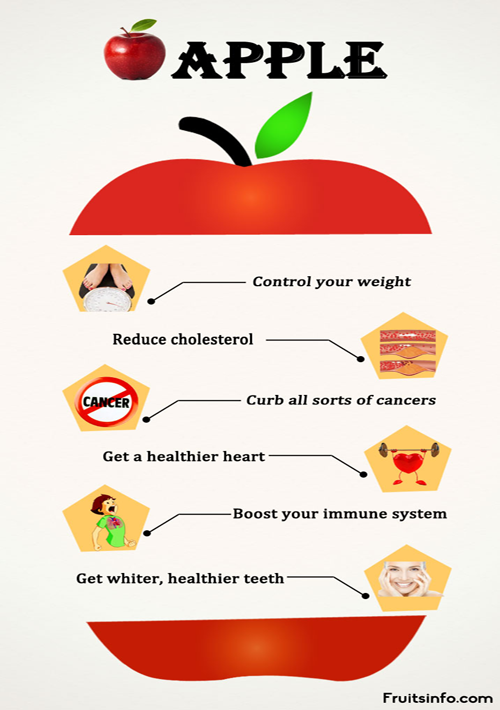An apple is a sweet, edible fruit produced by an apple tree. Apple trees are cultivated worldwide and are the most widely grown species in the genus Malus. The tree originated in Central Asia, where its wild ancestor, Malus sieversii, is still found today.
Apples are extremely rich in important antioxidants, flavonoids, and dietary fiber. The phytonutrients and antioxidants in apples may help reduce the risk of developing cancer, hypertension, diabetes, and heart disease. This article provides a nutritional profile of the fruit and its possible health benefits.
Apples are a sweet fleshy fruit that grows around the world.
Believed to originate in Central Asia, there are now hundreds of varieties of apples, ranging from sweet to sour.
Nutritionally speaking, apples are a relatively high-carbohydrate fruit and their most significant nutrient is vitamin C.
They’re a very versatile fruit; while often eaten as a snack, they’re also used in a variety of dessert recipes.
Per large apple, the nutrient profile looks like this;
· Calories: 104 kcal
· Carbohydrate: 27.6 g
· Fiber: 2.8 g
· Sugar: 21.8 g
· Fat: 0.3 g
· Protein: 0.6 g
· Vitamin C: 14% RDA
· Potassium: 6% RDA
· Manganese: 4% RDA
· Vitamin B6: 4% RDA
· Vitamin B2: 4% RDA
Why Apples Are So Good For Your Skin
Their high content of vitamin C helps to build collagen, and their levels of copper (60 mcg in a large apple) encourage your skin to produce melanin, the pigment responsible for colour in your skin. This helps to protect your skin from UV rays and melanin also helps to build healthy tissues, hair and eyes.
Vitamin C is a powerful antioxidant, which reduces the free-radical damage to your skin cells caused by pollution or excess sun exposure. These free radicals breakdown the collagen and elastic fibres that support your skin, and can encourage fine lines and wrinkles to develop along with other signs of premature ageing.
Homemade Apple Juice Preparation steps
1. Start by washing and then coring the apple to remove seeds. Cut the apples into slices. There is no need to peel the apples.
2. Add the apples to the pot and add enough water to just cover them. Too much water and you’ll have pretty diluted juice. This juice may come out a bit strong, but it’s a lot easier to dilute the juice with extra water rather than trying to make the flavor stronger.
3. Slowly boil the apples for about 20-25 minutes or until the apples are quite soft. Place a coffee filter or piece of cheesecloth in your fine mesh strainer and place over a bowl.
4. Slowly ladle the hot juice/apple mixture into a fine mesh strainer and gently mash the apples. The juice will be filtered through the bottom into your bowl while the apple mush will be left behind. Place the mush in a separate bowl for later. Repeat this process until all of your juice is in the bowl.
5. Taste the juice after it’s cooled for a bit. You can add additional sugar or cinnamon depending on your preferences. Again, if the flavor is too strong, you can add water a little bit at a time to weaken the flavor.
6. The apple mush you collected can easily be turned into applesauce by pureeing and adding a smidgen of sugar and cinnamon to taste.
7. Keep in mind your homemade apple juice doesn’t have any preservatives so be sure to keep it refrigerated and to use it within a week!

Apple Smoothie Recipe
Servings: 2 Servings
Ingredients
1/2 cup apple juice
3/4 cup diced apple; peeled or unpeeled
3/4 cup low-fat vanilla yogurt
1/2 banana; sliced
Pinch of cinnamon or nutmeg
Instructions
Pour the apple juice into your blender.
Next, you add the rest of the ingredients and blend until smoothie.
